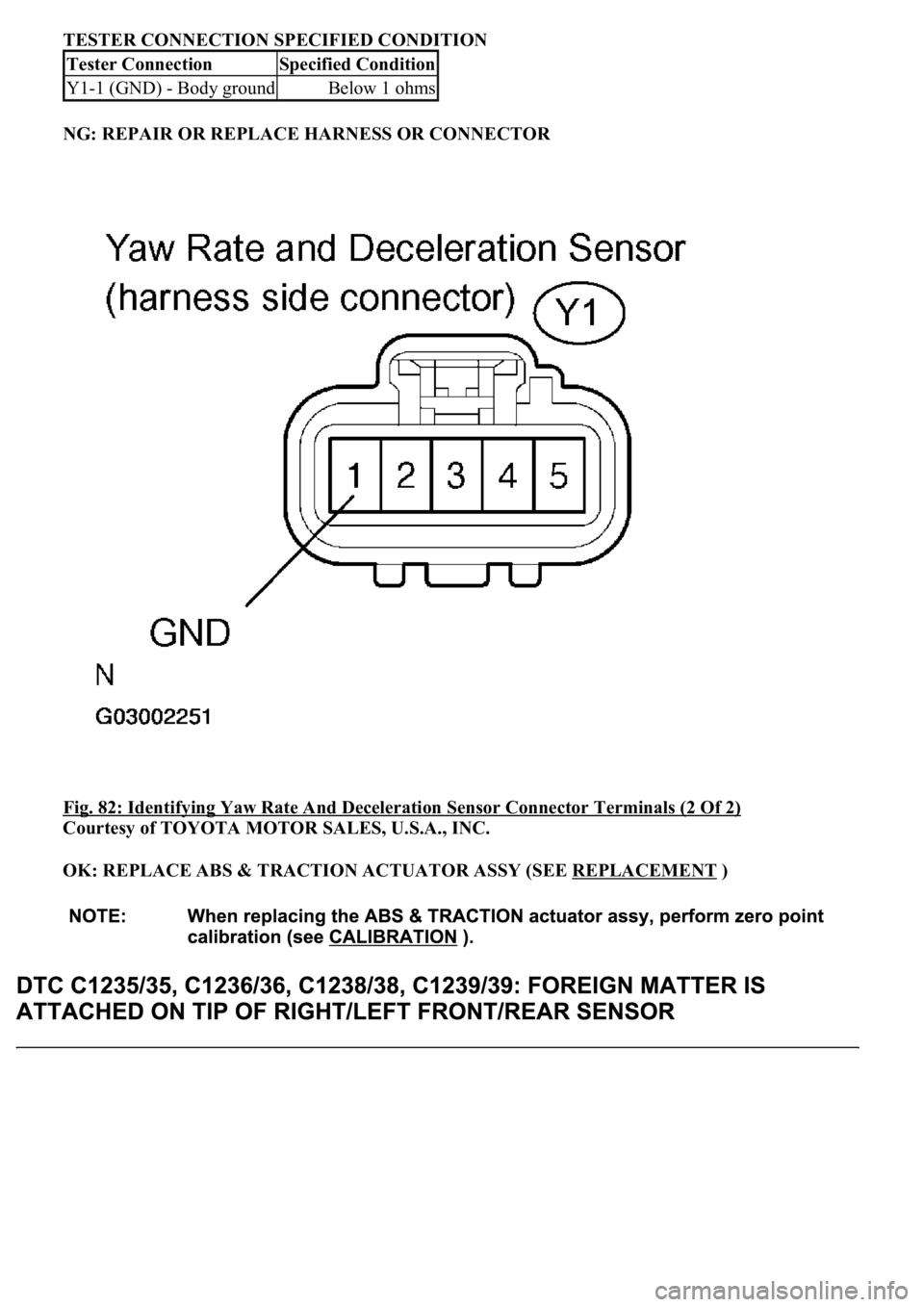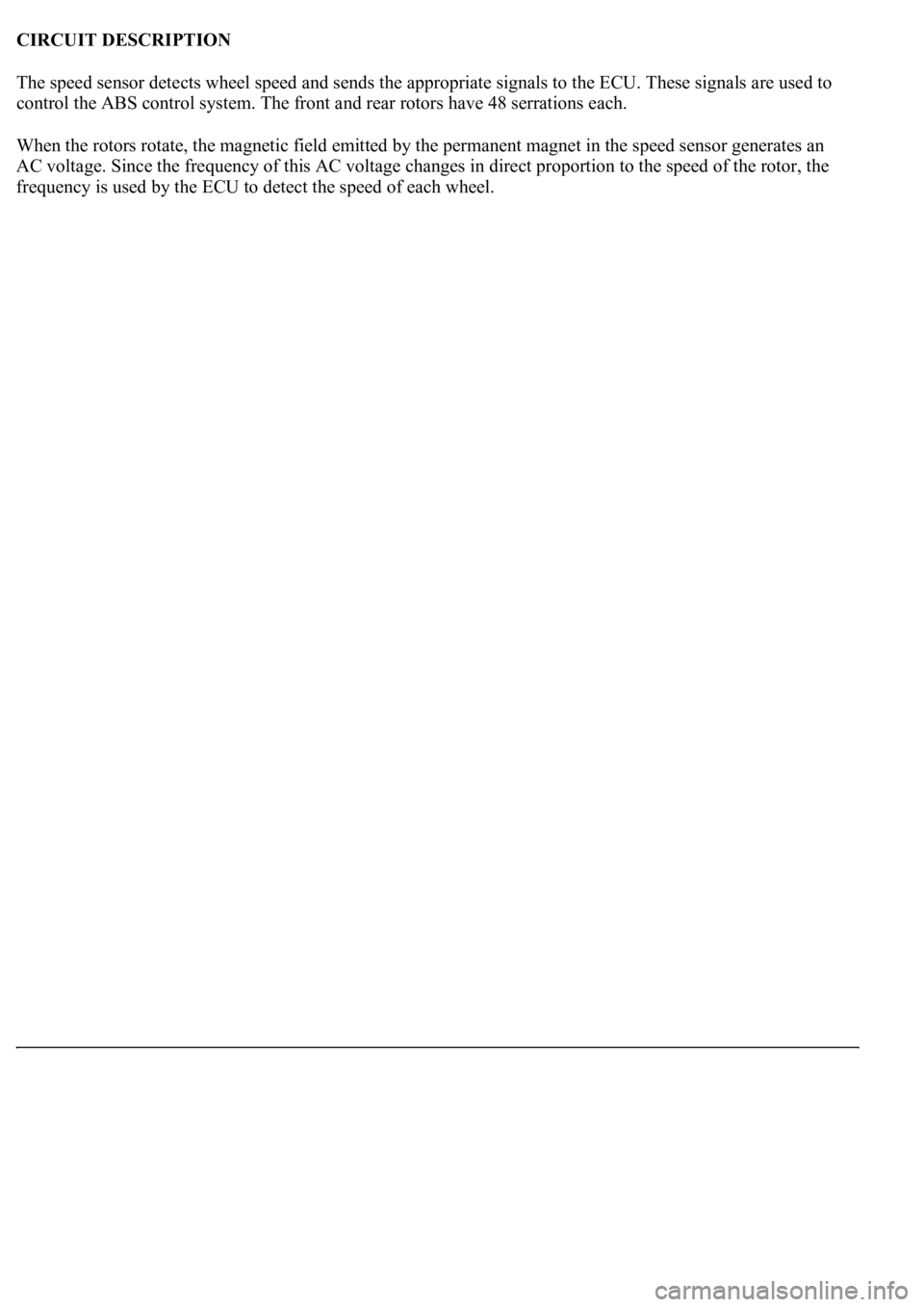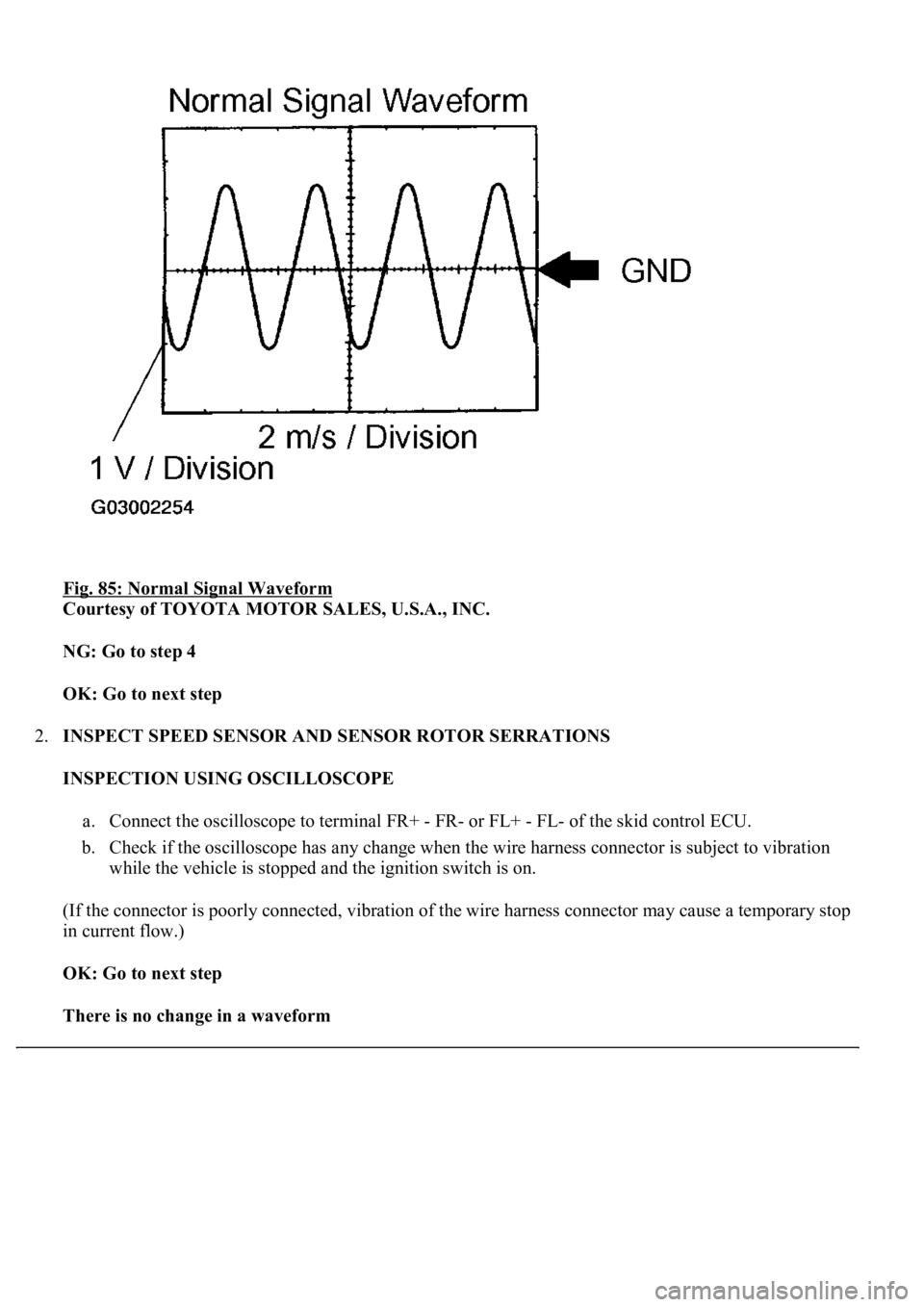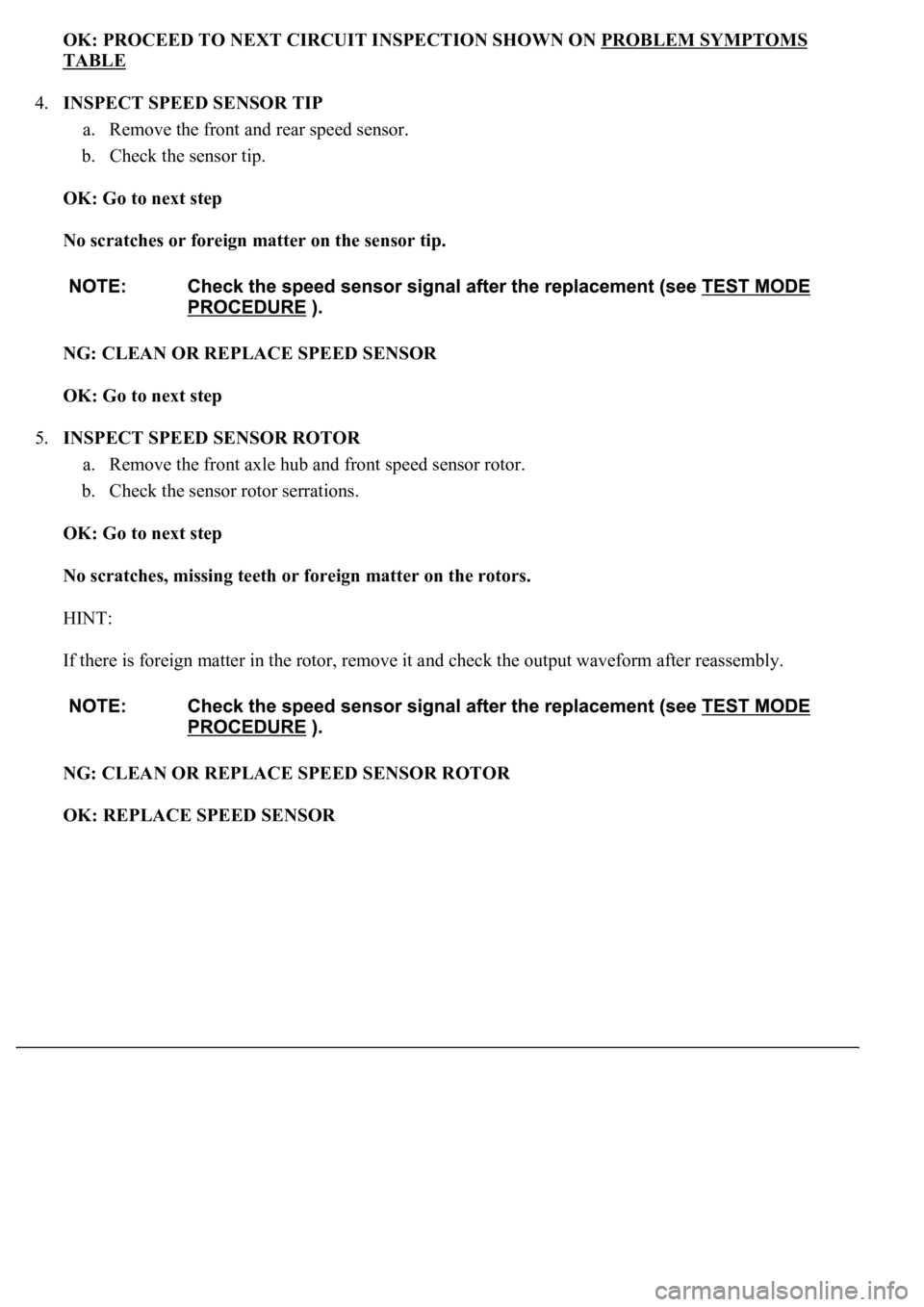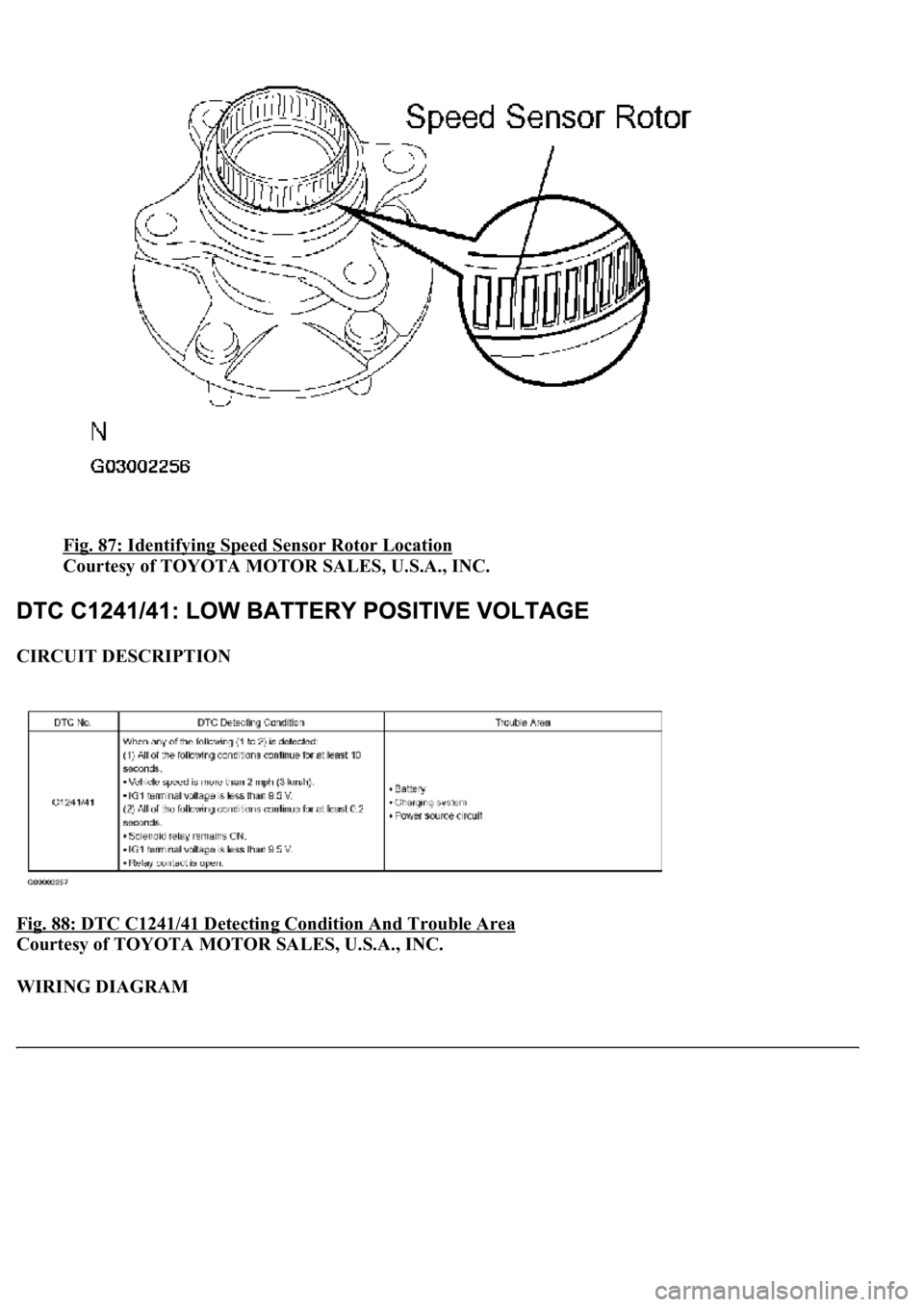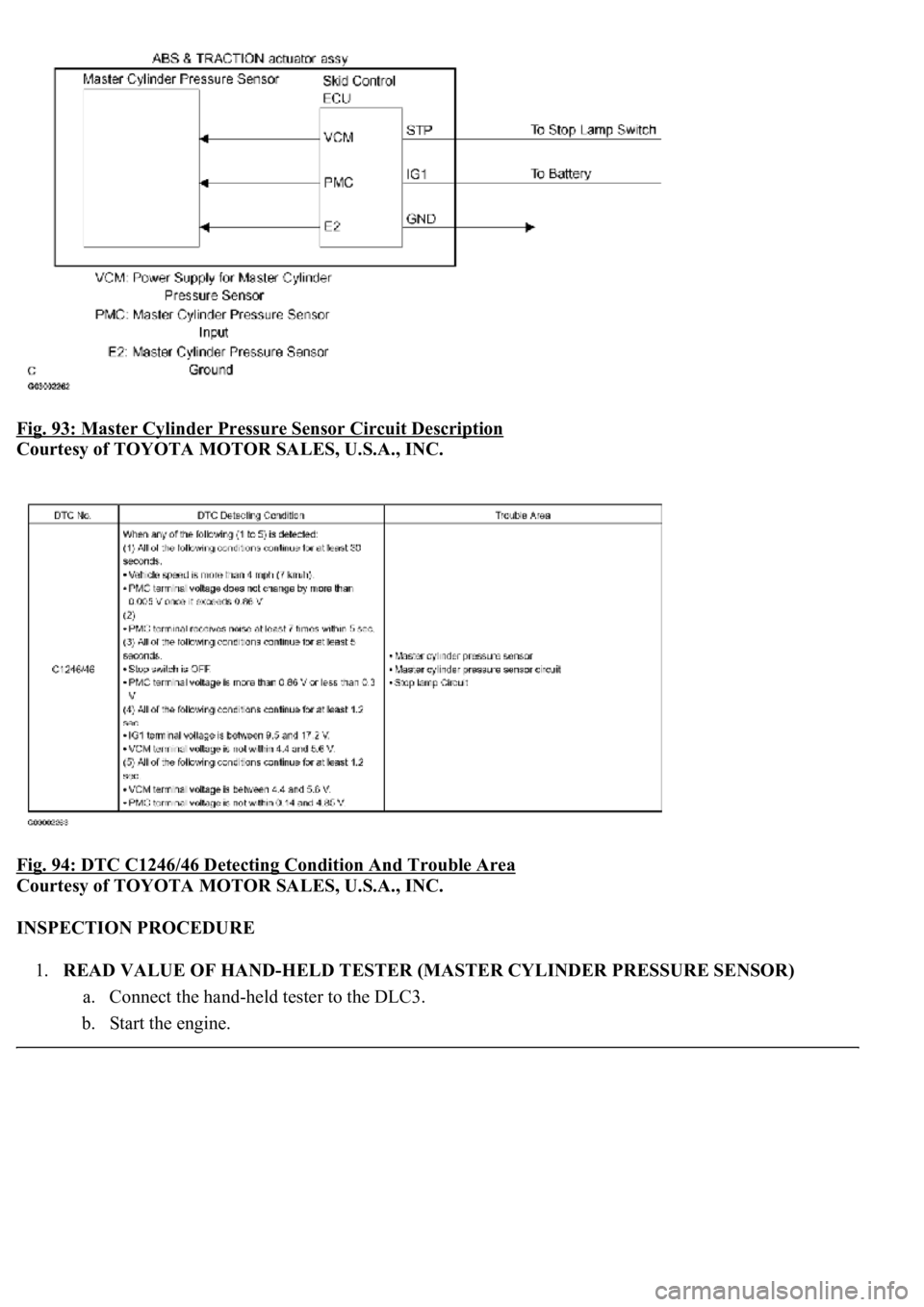LEXUS LS430 2003 Factory Manual PDF
LS430 2003
LEXUS
LEXUS
https://www.carmanualsonline.info/img/36/57050/w960_57050-0.png
LEXUS LS430 2003 Factory Manual PDF
Page 115 of 4500
TESTER CONNECTION SPECIFIED CONDITION
NG: REPAIR OR REPLACE HARNESS OR CONNECTOR
Fig. 82: Identifying Yaw Rate And Deceleration Sensor Connector Terminals (2 Of 2)
Courtesy of TOYOTA MOTOR SALES, U.S.A., INC.
OK: REPLACE ABS & TRACTION ACTUATOR ASSY (SEE REPLACEMENT
)
Tester ConnectionSpecified Condition
Y1-1 (GND) - Body groundBelow 1 ohms
Page 116 of 4500
CIRCUIT DESCRIPTION
The speed sensor detects wheel speed and sends the appropriate signals to the ECU. These signals are used to
control the ABS control system. The front and rear rotors have 48 serrations each.
When the rotors rotate, the magnetic field emitted by the permanent magnet in the speed sensor generates an
AC voltage. Since the frequency of this AC voltage changes in direct proportion to the speed of the rotor, the
frequenc
y is used by the ECU to detect the speed of each wheel.
Page 117 of 4500
Fig. 83: Left Rear Sensor Circuit Description
Courtesy of TOYOTA MOTOR SALES, U.S.A., INC.
Page 118 of 4500
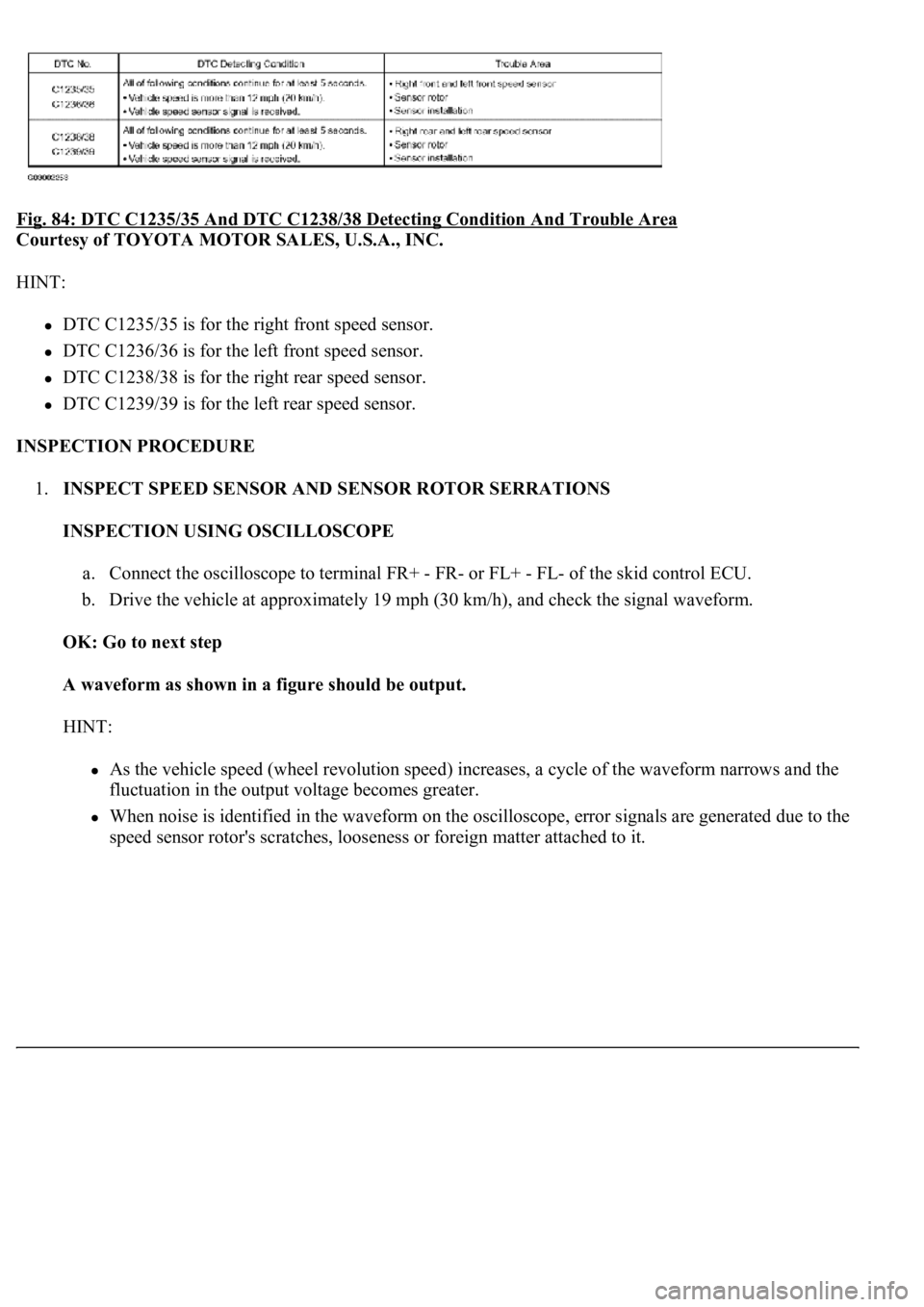
Fig. 84: DTC C1235/35 And DTC C1238/38 Detecting Condition And Trouble Area
Courtesy of TOYOTA MOTOR SALES, U.S.A., INC.
HINT:
DTC C1235/35 is for the right front speed sensor.
DTC C1236/36 is for the left front speed sensor.
DTC C1238/38 is for the right rear speed sensor.
DTC C1239/39 is for the left rear speed sensor.
INSPECTION PROCEDURE
1.INSPECT SPEED SENSOR AND SENSOR ROTOR SERRATIONS
INSPECTION USING OSCILLOSCOPE
a. Connect the oscilloscope to terminal FR+ - FR- or FL+ - FL- of the skid control ECU.
b. Drive the vehicle at approximately 19 mph (30 km/h), and check the signal waveform.
OK: Go to next step
A waveform as shown in a figure should be output.
HINT:
As the vehicle speed (wheel revolution speed) increases, a cycle of the waveform narrows and the
fluctuation in the output voltage becomes greater.
When noise is identified in the waveform on the oscilloscope, error signals are generated due to the
speed sensor rotor's scratches, looseness or forei
gn matter attached to it.
Page 119 of 4500
Fig. 85: Normal Signal Waveform
Courtesy of TOYOTA MOTOR SALES, U.S.A., INC.
NG: Go to step 4
OK: Go to next step
2.INSPECT SPEED SENSOR AND SENSOR ROTOR SERRATIONS
INSPECTION USING OSCILLOSCOPE
a. Connect the oscilloscope to terminal FR+ - FR- or FL+ - FL- of the skid control ECU.
b. Check if the oscilloscope has any change when the wire harness connector is subject to vibration
while the vehicle is stopped and the ignition switch is on.
(If the connector is poorly connected, vibration of the wire harness connector may cause a temporary stop
in current flow.)
OK: Go to next step
There is no change in a waveform
Page 121 of 4500
OK: PROCEED TO NEXT CIRCUIT INSPECTION SHOWN ON PROBLEM SYMPTOMS
TABLE
4.INSPECT SPEED SENSOR TIP
a. Remove the front and rear speed sensor.
b. Check the sensor tip.
OK: Go to next step
No scratches or foreign matter on the sensor tip.
NG: CLEAN OR REPLACE SPEED SENSOR
OK: Go to next step
5.INSPECT SPEED SENSOR ROTOR
a. Remove the front axle hub and front speed sensor rotor.
b. Check the sensor rotor serrations.
OK: Go to next step
No scratches, missing teeth or foreign matter on the rotors.
HINT:
If there is foreign matter in the rotor, remove it and check the output waveform after reassembly.
NG: CLEAN OR REPLACE SPEED SENSOR ROTOR
OK: REPLACE SPEED SENSOR
Page 122 of 4500
Fig. 87: Identifying Speed Sensor Rotor Location
Courtesy of TOYOTA MOTOR SALES, U.S.A., INC.
CIRCUIT DESCRIPTION
Fig. 88: DTC C1241/41 Detecting Condition And Trouble Area
Courtesy of TOYOTA MOTOR SALES, U.S.A., INC.
WIRING DIAGRAM
Page 126 of 4500
TESTER CONNECTION SPECIFIED CONDITION
NG: REPAIR OR REPLACE HARNESS OR CONNECTOR (GND TERMINAL - BODY
GROUND)
Fig. 92: Identifying Skid Control ECU Connector Terminals
Courtesy of TOYOTA MOTOR SALES, U.S.A., INC.
OK: CHECK AND REPAIR HARNESS AND CONNECTOR (IG1 TERMINAL - BATTERY)
CIRCUIT DESCRIPTION
Master c
ylinder pressure sensor is connected to the skid control ECU in the actuator.
Tester ConnectionSpecified Condition
S42-32 (GND) - Body groundBelow 1ohms
Page 127 of 4500
Fig. 93: Master Cylinder Pressure Sensor Circuit Description
Courtesy of TOYOTA MOTOR SALES, U.S.A., INC.
Fig. 94: DTC C1246/46 Detecting Condition And Trouble Area
Courtesy of TOYOTA MOTOR SALES, U.S.A., INC.
INSPECTION PROCEDURE
1.READ VALUE OF HAND-HELD TESTER (MASTER CYLINDER PRESSURE SENSOR)
a. Connect the hand-held tester to the DLC3.
b. Start the engine.
Page 128 of 4500

c. Select the DATA LIST mode on the hand-held tester.
MEASUREMENT ITEM / RANGE (DISPLAY) DESCRIPTION
d. Check that the brake fluid pressure value of the master cylinder pressure sensor observed in the
hand held tester changes when the brake pedal is depressed.
OK: Go to next step
When the pedal is depressed, displayed voltage on the hand-held tester increases.
NG: Go to step 2
OK: REPLACE ABS & TRACTION ACTUATOR ASSY (SEE REPLACEMENT
)
2.INSPECT SKID CONTROL ECU TERMINAL VOLTAGE (STP TERMINAL)
a. Disconnect the skid control ECU connector.
b. Measure the voltage according to the value (s) in the table below.
Standard:
TESTER CONNECTION SPECIFIED CONDITION
NG: CHECK AND REPLACE STOP LIGHT SWITCH CIRCUIT
OK: REPLACE ABS & TRACTION ACTUATOR ASSY (SEE REPLACEMENT
)
ItemMeasurement Item / Range (Display)Normal Condition
MAS CYL PRS
1Master cylinder pressure sensor 1 reading /
min.: 0 V, max.: 5 VWhen brake pedal is released:
0.3 to 0.9V
Tester ConnectionSwitch ConditionSpecified Condition
S42-27 (STP) - Body groundBrake pedal depressed8 to 14V
S42-27 (STP) - Body groundBrake pedal releasedBelow 1 V
